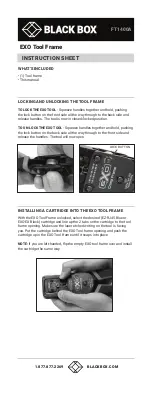
4
Features
General Operation
The Toyota 12V Auxiliary Power Socket is controlled by a Smart Circuit which is powered
via a fuse directly from the vehicle battery.
The Smart Circuit is capable of switching off the Auxiliary Power Sockets, depending on
the state of the vehicle battery or the state of the device connected to the 12V Auxiliary
Power Socket.
The main considerations the Smart Circuit monitors are:
1 - Output current level. This information is used to determine if the current draw exceeds 15A on an
individual socket or 22A combined across both sockets or if there is short circuit.
2 - Vehicle battery state of charge. This is estimated by monitoring the battery voltage and current
draw from the battery. The battery state of charge is used to determine when to safely remove
power from the smart circuit sockets to ensure the vehicle operation is maintained.
3 - Correct supply voltage.
In all cases the Smart Circuit has the ability to turn off the 12V Auxiliary Power Socket in order to
protect the vehicle and also the devices being powered.
Battery Protection
The Smart Circuit will monitor the battery state of charge. If the battery state of charge
approaches the threshold required to start the vehicle, the Smart Circuit disables power to
both of the Auxiliary Power Sockets. The red LED will then double flash. Prior to the smart
circuit disabling power to the sockets, the green LED will flash quickly for approximately 5
minutes as a warning the device will soon disconnect power.
The user can choose to over-ride the Auxiliary Power Sockets cutoff by pressing the
capacitive switch for 5 seconds. The green and red LED will alternately flash to indicate
override is active. To exit override mode, press the capacitive switch for 5 seconds and the
green and red LED will stop alternately flashing.
Note:
By overriding the battery low state of charge threshold, the user acknowledges that
the battery level could potentially fall below the charge required to start the vehicle. The
amount of time for this to occur depends on the power consumption of the devices
connected. It is not recommended to use the device in override mode for extended periods
of time. If you plan to do so, it is advised to run the vehicle engine.
The override mode can continue to be used until the battery reaches a critical level and at
this point, the sockets are isolated and can no longer be overriden. The system will then
enter standby mode to limit power consumption. This mode is indicated by the red LED
flashing slowly (approximately once every 8 seconds). The system will return to normal
operation when the vehicle is started and battery returns to normal level.
ISSUE 1 09/07/20
PZQ85-75295






























